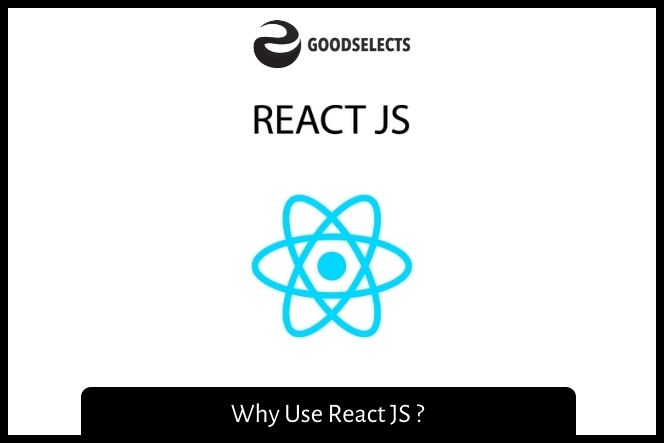If you’re wondering why you should choose ReactJS over other frameworks, read on. Its key advantages include speed, ease of use, and testing. These advantages make it one of the best options for web development, and should make you a pro in no time. In addition, you’ll be able to integrate it with other frameworks with ease. The following are some reasons why you should consider using ReactJS for your next project.
Easy to learn
While React is a powerful web development framework, it is not a difficult language to learn. It is based on JavaScript, which is a core web language. You should know some basic HTML and CSS before you begin to learn React. It does require a foundation of knowledge in these three areas. You do not need to spend a lot of time learning these skills, but it will be helpful.
While some advanced concepts require expert knowledge, learning the basics of React is a breeze. The library includes comprehensive documentation that will guide you from beginner to advanced concepts. You can even build a simple prototype to test your skills. For beginners, it’s best to start small and move on to more complex projects once you feel comfortable. Nonetheless, it can take a week or two to learn all the features and concepts of React.
The first step in learning React is to get familiar with the language. A beginner should start by learning the basics of HTML, CSS, and JSX. They should be familiar with selectors, classes, and CSS reset. It is also important to get familiar with the React CLI (command line interface).
Learning React is relatively easy if you have a background in HTML. Building as many projects as possible is the best way to get the most out of the language. You can also get a head start by learning React’s syntax with this video playlist. It is very important to understand JSX, which is the syntax that React uses for HTML. JSX is a simple extension of the JavaScript language syntax.
A paid course is another option for learning React. These courses usually come with instructor support and access to a community of like-minded individuals. In addition to online courses, you can attend meetups or workshops that are organized by companies that specialize in React. These events can be beneficial for you to get the latest information and interact with experienced developers. If you are not ready for paid courses, you can learn React from books and tutorials.
Easy to test
There are many ways to test your application with React. For each component in your application, you need to write one test block, which accepts two required parameters: the first argument represents the test case name, and the second is a function that holds the expectations for the component. Once you have a test block, you can write assertion code to ensure that the component behaves as expected. The following are examples of test blocks.
Component tests are integration tests for React apps. They verify whether or not a component responds to user actions. They can test the onclick method of the underlying div, or test whether a user clicks or types in an input element. They can also test whether or not a component responds to user events. You should always make sure to write tests for each component. This will save you time and help your application stay bug-free.
UI tests are more expensive and require extensive environment setups. However, they focus on the critical path of the application and eliminate unnecessary complexity. Fortunately, many testing environments include the ability to access React applications. Tests for this framework can help you avoid costly refactors and snags in the development process. This is a great way to ensure that your application is bug-free and a success!
You can also write unit tests for your React applications. These tests are similar to those written for JavaScript code, and require that you render component trees in a simplified test environment and assert on their output. End-to-end tests, on the other hand, require that the entire application is run in a realistic browser environment. End-to-end tests are the most complex type of tests, and will prevent regressions in the most critical workflows.
Several open-source testing frameworks are available for React. Jest was developed by Facebook and has the best integration with React. It includes a command line tool for test execution and a comprehensive set of matchers. It also has snapshot testing and makes assertions easier than ever. Airbnb also provides a similar testing framework called Enzyme. It is designed for component-level testing and is recommended by the React team.
Easy to integrate with other frameworks
React is a JavaScript library that is used for front-end web development. It helps you create dynamic interfaces that update on the client side. React is commonly used for Facebook’s feeds and was developed by the company itself. It is easy to integrate with other frameworks, and its low learning curve makes it a popular choice. You can learn more about React by reading the following sections.
React was developed to solve some of the problems associated with JavaScript applications, which were becoming increasingly large and complex. Its use by Facebook further enhances its quality. Its core team is dedicated to making improvements to the library, and this is visible in the open source community. To get started with React, here are some of the common uses for it. Its popularity is a result of its many advantages.
React is easy to learn. Since it does not include classical templates or complicated characteristics, it is easy to learn and use. Unlike Angular, which requires a developer to update their code when new upgrades are released, React offers customized migration scripts that take care of this problem for you. In comparison, the development cycle for Angular apps is six months long, so you’ll need to change your code every six months.
React’s API is flexible and a great choice for creating component-centric applications. Developers can use it to build stand-alone UI components, as well as complete user interfaces. React is non-opinionated and can be paired with a wide range of back-end technologies. Its vibrant ecosystem has a wide range of use cases. So, if you’re looking for a jQuery library, React may be a great choice.
React is fast, and combines well with other frameworks. The virtual DOM (document object model) provides a fast execution of the application. The DOM defines the logical structure of documents and enables the use of different types of data, including dates and time zones. The performance of a React app depends on how well its structure is defined and accessible. When this is done correctly, it speeds up application development.
Fast development
ReactJS is a popular framework for web development, and has many advantages for developers. It provides component reusability, which means that you only need to update a single component rather than the entire application. This can be time and cost-saving. With the help of components, you can build your applications faster and with less code duplication. It also reduces the number of lines of code to maintain.
React has an excellent syntax extension, JSX, that makes it easier to write custom components. If you’re creating a high-volume app, you’ll appreciate JSX’s syntax extension. You can also use it to turn HTML mockups into ReactElement trees. Complex apps often require frequent updates, which can be a pain. Component reusability helps combat this issue by making components reusable.
The framework has a large community that’s passionate about it. Its Github page has 180K stars, and there are 10 million npm downloads each week. React components are simple, reusable, and fast to manipulate. They’re even easy to use when developing high-load apps. However, if you’re building a high-load application, you’ll need to clarify the structure of the components. Luckily, React can handle this for you!
React uses a Virtual DOM to monitor component state and compare it to the existing state of the DOM to determine the simplest way to update the DOM. This minimizes CPU usage and page load time. Virtual DOMs are the best way to save time on development, as they can maintain cache memory and allow developers to focus on building single components instead of a full website. This will ensure a smooth experience for everyone.
React has a low learning curve. React allows developers to reuse components, which makes defining logic easier. The language also provides high performance, with the virtual DOM allowing for faster rendering times. Additionally, you can test your app with just the node command-line. So if you’re an experienced JavaScript developer, you can take advantage of the latest framework with React. The possibilities are endless!









































